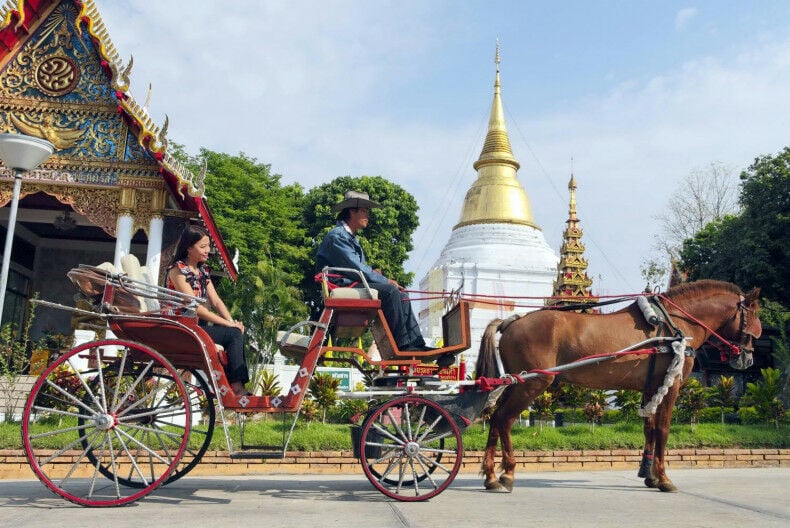Lamps out: Lampang horse-drawn carriage rides face unbridled end

The famed horse-drawn carriage rides in Lampang may soon become a relic of the past, as dwindling tourism revenue fails to attract new generations to sustain the business, according to the Tourism Council of Lampang.
Lampang registered 559,892 visitors in the first four months of this year, a 0.52% decline year-on-year, with only 35,131 foreign travellers. Despite the drop in visitor numbers, the province’s tourism income increased by 3.09% to 1.8 billion baht, with 1.62 billion baht coming from Thai tourists.
Last year, Lampang generated 5.36 billion baht in tourism revenue, ranking 38th in the country. In contrast, neighbouring Chiang Mai ranked fourth, pulling in 89.2 billion baht.
Waleerat Wiphasrinimit Lines, president of the Tourism Council of Lampang, noted that the number of horse-drawn carriages in the province has remained steady at about 100 for several years, even before the pandemic.
“The existing fleet meets the current demand but the real challenge lies in finding drivers. Most current drivers are between 40 and 50 years old, and their children are not interested in continuing this cultural heritage due to the low and unstable income compared to other professions.”
A short sightseeing trip costs 300 baht while a longer trip costs 400 baht.
“Even though tourists who visit Lampang still want to ride on horse-drawn carriages, the job is unattractive to younger people.”
Efforts are being made to encourage younger generations to take up the reins.
“We’re trying to support young drivers, not only to stimulate income but also to make them proud of preserving the provincial cultural heritage. Not everyone can become a driver, as the job also requires taking good care of the animals.”
Revenue boost
Lampang hosted its first Lampang Carriage Carnival last year to boost tourism revenue and preserve this unique mode of transport. Each key tourism province in the north has established an annual event to draw visitors, such as the floral expo in Chiang Mai, which generates 80 million baht in annual spending, and the Thailand Biennale in Chiang Rai, which contributed 100 million baht to the province this year.
Earlier this month, the Tourism Authority of Thailand (TAT) facilitated a meeting between the public and private sectors of five northern provinces to address obstacles for second-tier tourism cities. The Tourism Council of Lampang raised the carriage issue to Prime Minister Srettha Thavisin.
The government promised to support the carnival, scheduled for August 9 to 12. However, Waleerat noted that the council and the Lampang Carriage Association have not received the additional budget as promised, which may necessitate scaling down the event, reported Bangkok Post.
“We are committed to preserving this cultural heritage, but without adequate support, it’s challenging to keep the tradition alive.”
Latest Thailand News
Follow The Thaiger on Google News:


























